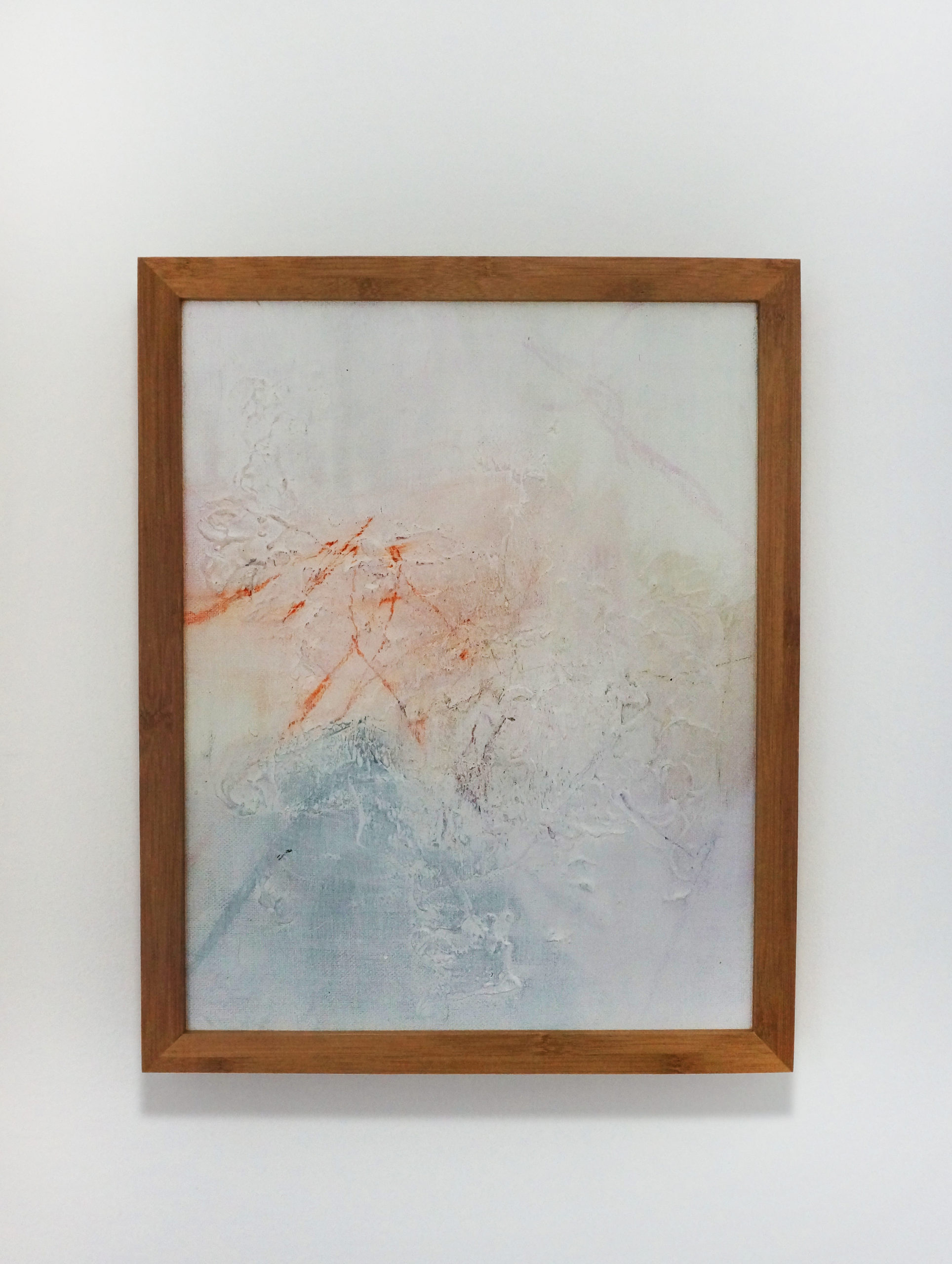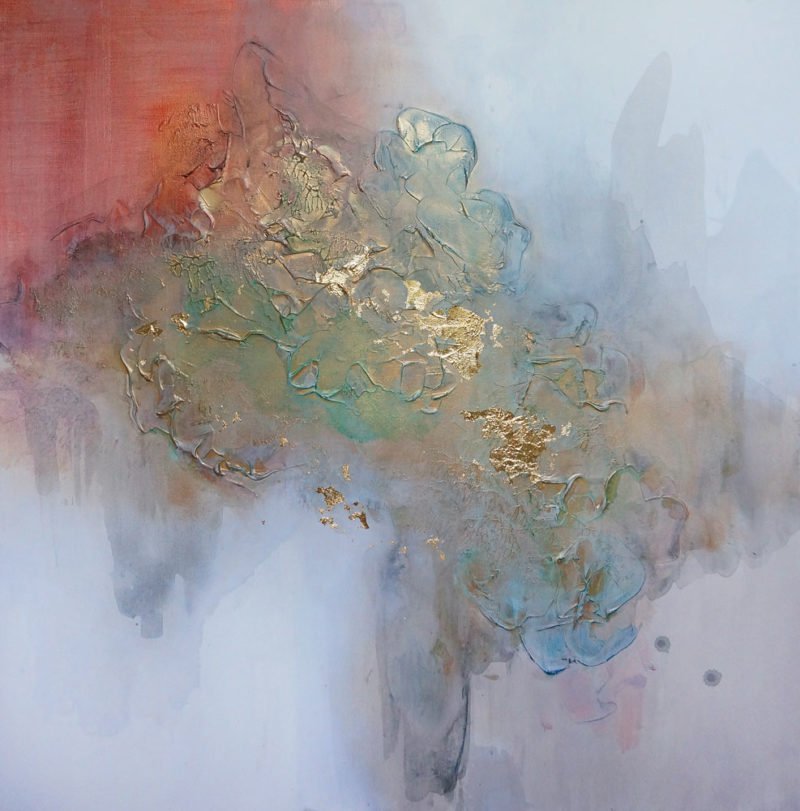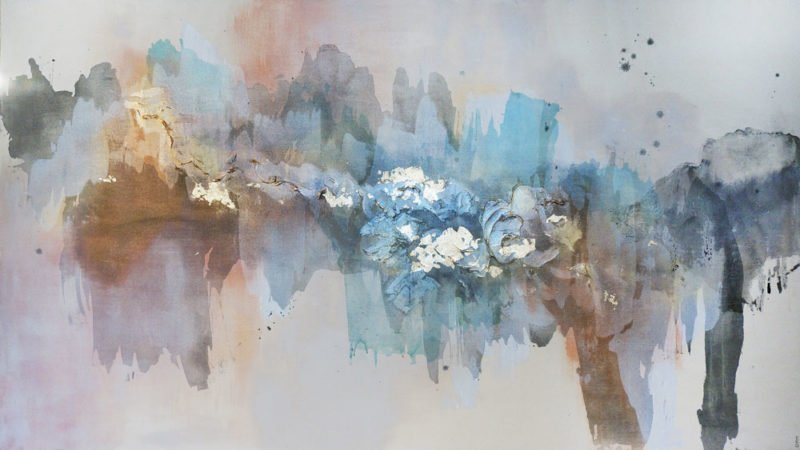We Don’t Touch Anymore #4
$360.00
We Don’t Touch Anymore #4 , 11″x14″ acrylic and oil pastel on canvas panel. This piece comes double sealed with UV protection as well as moisture dust barrier. It comes framed in a walnut stained, bamboo frame.
One of the first forms we are taught is the line, defined as the compilation of many dots in a single direction. Lines are the gateway to other shapes.
It is because of their versatility that I have always ascribed the symbol of a line to our lives. To me, every person is a line. People are not circles, or triangles, or squares. People have beginnings and ends. Lines go up and down and meet and cross other lines. Our lives are the same. We have ups and downs, we meet new people, some people run parallel to our lives for periods of time, then split of and go a different direction. I call the drawn lines of our lives, “lifelines.”
I first adopted the use of “lifelines” in my series “The Divide.” This series was based on the sudden loss of four family members and my college roommate all in a period of 2 years. In this series, lifelines were indicative of how our lives cross, run parallel and you never know when someone you love is going to fall on the side of life or death. These lines twist, turn curve, fall in darkness and in light. The takeaway in this series was to savor and hold tightly to those around us due to the uncertainty of our lifelines.
In my new series “Touching & Other Illegal Things” the lifelines are back. This piece, “We Don’t Touch Anymore #4” incorporates lifelines, however here the lines do not touch; they don’t cross. They are whitewashed over, sanitized. In this time of staying at home during Covid-19 our lifelines do not touch and are whitewashed over. Whitewash symbolizes sanitation as this was the common method of sanitation for centuries. It also symbolizes the whitewash of news. When the truth feels like it’s changing daily, which sources of information do we trust? And even though our lifelines do not touch in these works, there is temptation. Here, the floating ghosts of lines past and the colors of our lifelines radiate underneath the whitewash. Vibrating under the surface, tense, and sharp, our lifelines wait for closer days.
Free Shipping on U.S. Domestic orders. Here is Number 1, Number 2, and Number 3.
Out of stock
Description
We Don’t Touch Anymore #4 , 11″x14″ acrylic and oil pastel on canvas panel. This piece comes double sealed with UV protection as well as moisture dust barrier. It comes framed in a walnut stained, bamboo frame.
One of the first forms we are taught is the line, defined as the compilation of many dots in a single direction. Lines are the gateway to other shapes.
It is because of their versatility that I have always ascribed the symbol of a line to our lives. To me, every person is a line. People are not circles, or triangles, or squares. People have beginnings and ends. Lines go up and down and meet and cross other lines. Our lives are the same. We have ups and downs, we meet new people, some people run parallel to our lives for periods of time, then split of and go a different direction. I call the drawn lines of our lives, “lifelines.”
I first adopted the use of “lifelines” in my series “The Divide.” This series was based on the sudden loss of four family members and my college roommate all in a period of 2 years. In this series, lifelines were indicative of how our lives cross, run parallel and you never know when someone you love is going to fall on the side of life or death. These lines twist, turn curve, fall in darkness and in light. The takeaway in this series was to savor and hold tightly to those around us due to the uncertainty of our lifelines.
In my new series “Touching & Other Illegal Things” the lifelines are back. This piece, “We Don’t Touch Anymore #4” incorporates lifelines, however here the lines do not touch; they don’t cross. They are whitewashed over, sanitized. In this time of staying at home during Covid-19 our lifelines do not touch and are whitewashed over. Whitewash symbolizes sanitation as this was the common method of sanitation for centuries. It also symbolizes the whitewash of news. When the truth feels like it’s changing daily, which sources of information do we trust? And even though our lifelines do not touch in these works, there is temptation. Here, the floating ghosts of lines past and the colors of our lifelines radiate underneath the whitewash. Vibrating under the surface, tense, and sharp, our lifelines wait for closer days.
View the other three We Don’t Touch Anymore pieces. Here is Number 1, Number 2, and Number 3.









